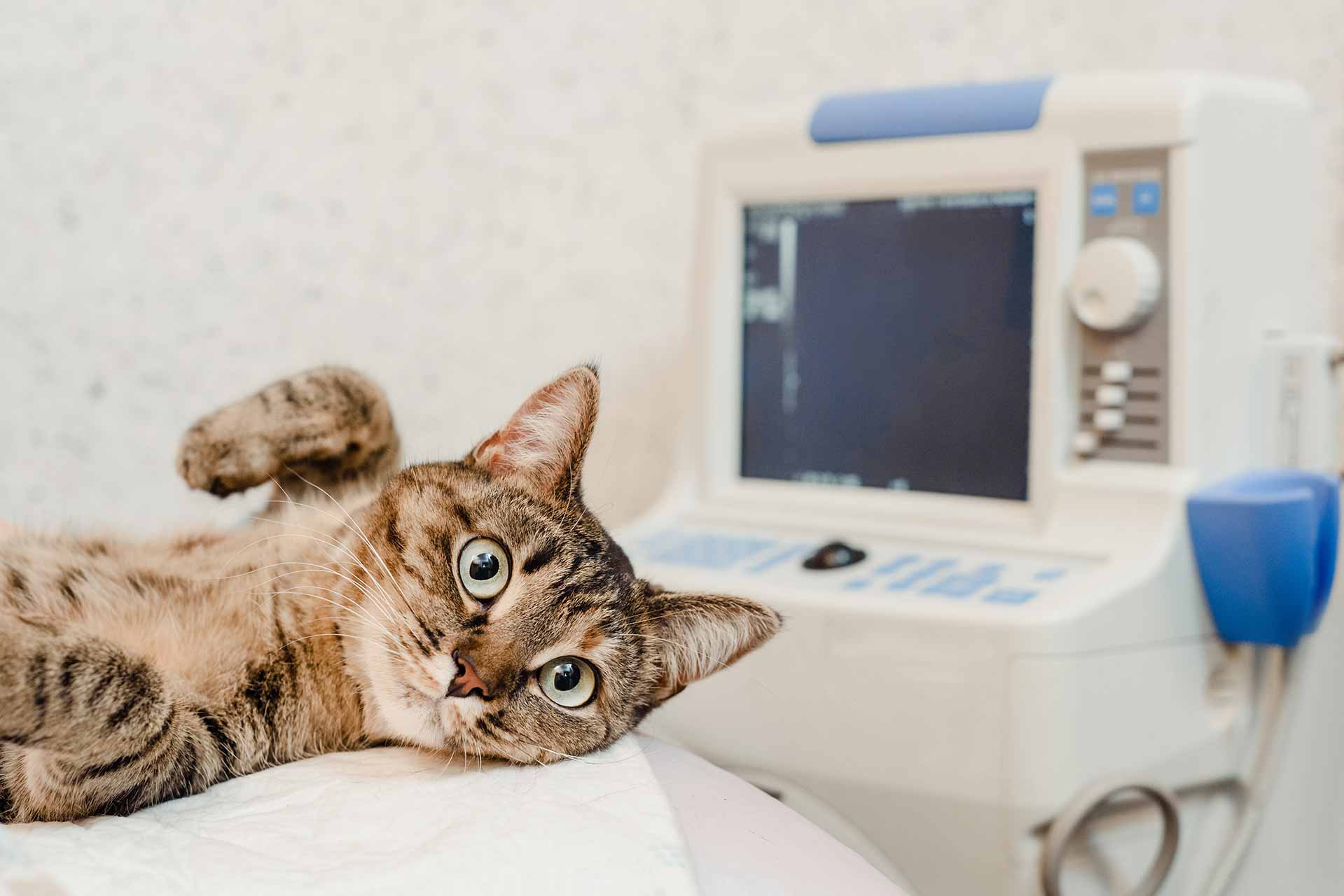Why pets require ultrasounds?
Ultrasound is a very handy tool for examining and diagnosing diseases or injuries in your pet. It is a simple and painless procedure that can be used for looking at soft tissue and internal organs such as the kidney, liver, spleen and heart.
Ultrasound works by emitting high-frequency sound waves, which reflect back as “echoes” to the machine. Ultrasound presents these echoes as visual patterns on the screen, which will then be examined by the ultrasound specialist or vet.
Ultrasound may be used instead of or in addition to x-rays, depending on the possible issue with your pet. For example, with lung problems, an x-ray is the preferred option to ultrasound, as well as for bone fractures or if your pet has swallowed a foreign body such as a toy. Conversely, an ultrasound will be often be best for diagnosing issues related to the heart, and gastrointestinal or reproductive system.
Ultrasound can be used for diagnosis or further investigations of a range if issues, such as:
Depending on the type of issue, your pet may require sedation or anaesthetic before the ultrasound is carried out, particularly if your pet is very young or nervous.



